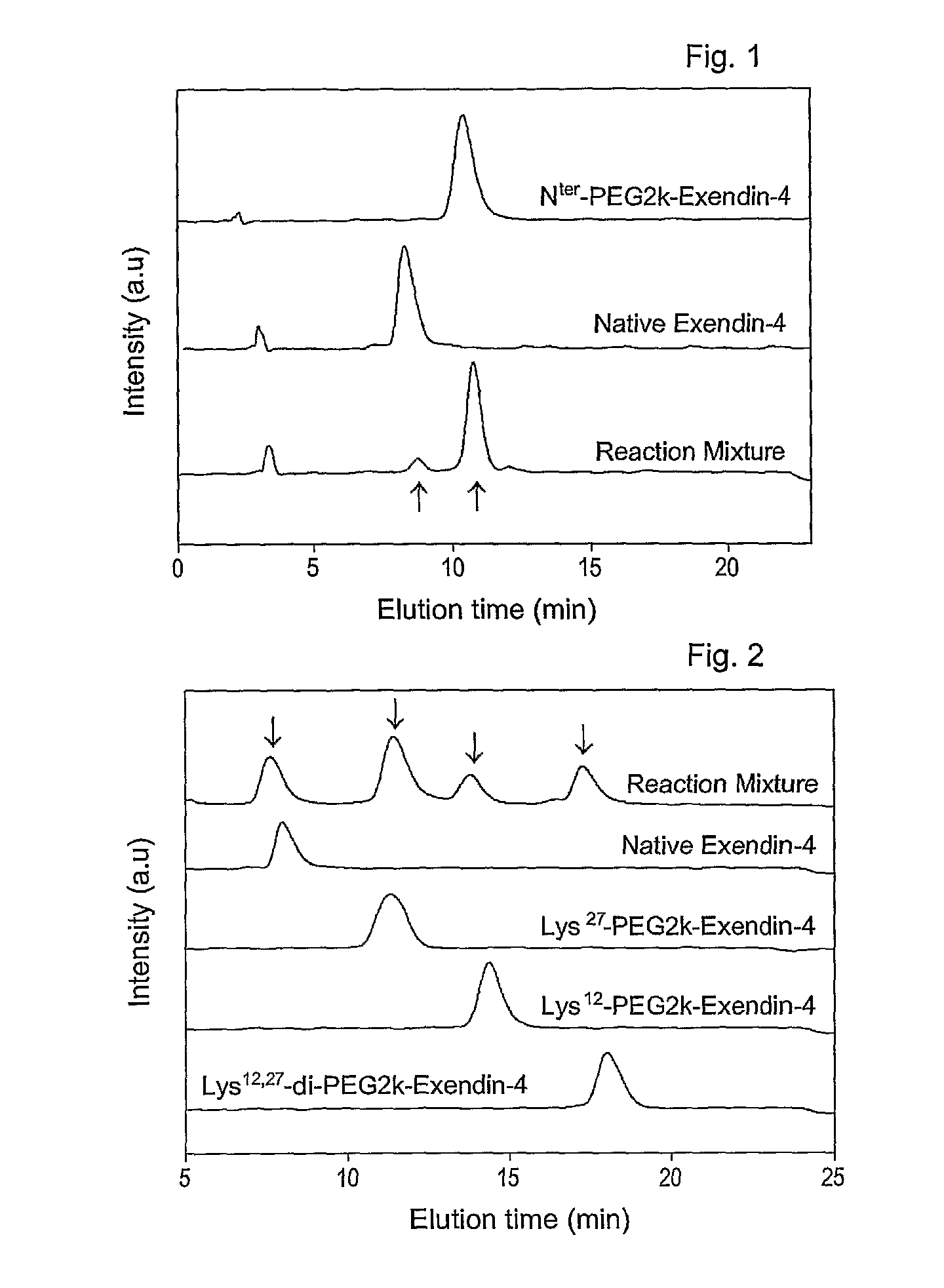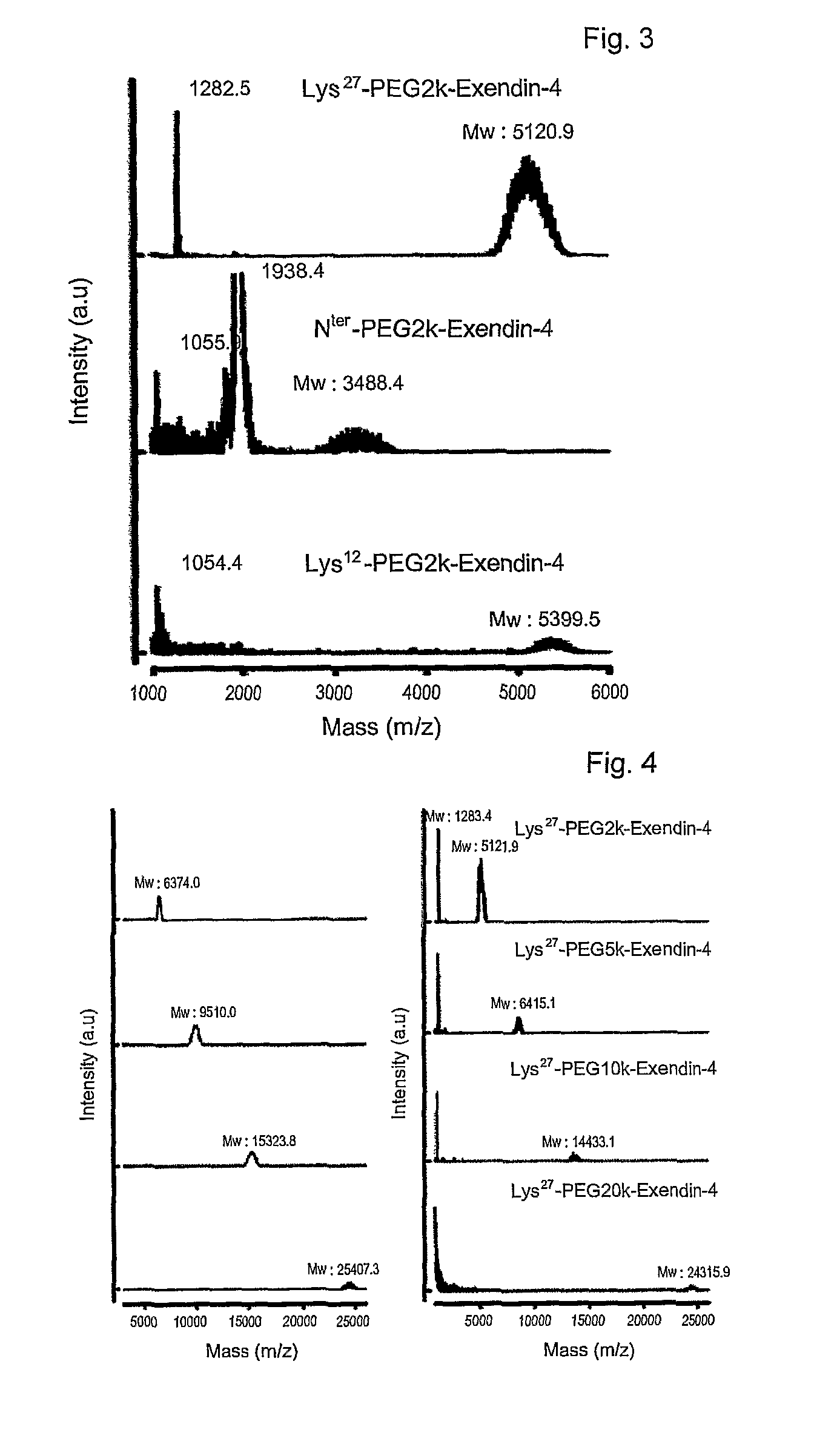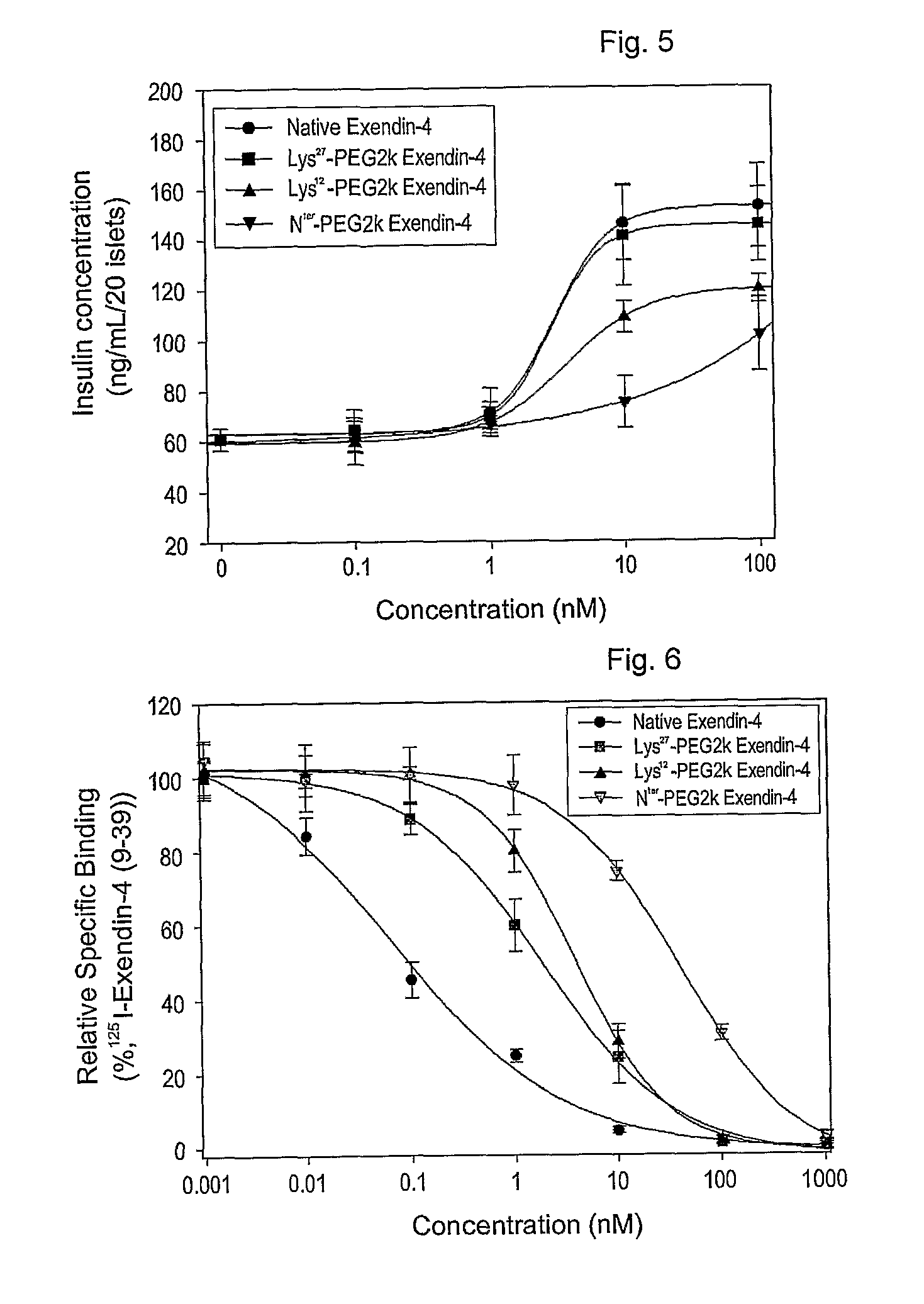Mono modified exendin with polyethylene glycol or its derivatives and uses thereof
a technology of polyethylene glycol and modified exendin, which is applied in the field of exendin, can solve the problems of limited utility of glp-1 therapy, short retention time in the body, poor water solubility, etc., and achieves the effects of promoting satiety, minimizing side effects, and improving half li
- Summary
- Abstract
- Description
- Claims
- Application Information
AI Technical Summary
Benefits of technology
Problems solved by technology
Method used
Image
Examples
example 1
Preparation of Methoxypolyethylene propionaldehyde Coupled Exendin-4
[0065]To 0.5 ml of exendin-4 (American Peptide, 1 mg / ml in 50 mM sodium acetate, pH 5.5) was added methoxypolyethylene propionaldehyde (Nektar, mPEG-propionaldehyde, mPEG-ALD, 2 kDa, 0.95 mg / ml in 50 mM sodium acetate, pH 5.5), followed by the addition of 20 mM NaCNBH3 as a reducing agent. The molar ratio of mPEG-ALD to exendin-4 was 1:1-2. Reaction between mPEG-ALD and exendin-4 was conducted for 2 hours at 4° C. in the dark. The reaction was terminated with an 0.1% aqueous trifluoroacetic acid (TFA) to afford an exendin modified at the N-terminus with PEG.
example 2
Preparation of Methoxypolyethylene Glycol Succinimidyl Propionate-Modified Exendin-4
[0066]Exendin-4 (American Peptide, in DMSO) was mixed with an equal volume of 2, 5, 10, or 20 kDa methoxypolyethylene glycol succinimidyl propionate (Nektar, mPEG-succinimidyl propionate (mPEG-SPA) in DMSO). Also, an equal volume of 9% tri-ethylamine (TEA in DMSO) was added as a reducing agent in an amount that formed a final concentration of 3%. The resulting mixture was allowed to react for about 60 min at room temperature in the dark. The molar ratio of exendin-4 to mPEG-SPA was 1-4:1. The reaction was terminated by adding a 0.1% TFA solution in distilled water at an equal volume to the reaction mixture to produce exendin-4 modified with 2, 5, 10 or 20 kDa PEG-modified exendin-4 (respectively, PEG2K-exendin-4, PEG5K-exendin-4, PEG10K-exendin-4 and PEG20K-exendin-4).
example 3
Preparation of Straight, Bi-Branched or Tri-Branched PEG-modified Exendin-4
[0067]Exendin modified at the N-terminus with PEG was prepared in a manner similar to that of Example 2, with the exception that straight (20 kDa), bi-branched (20 kDa) or tri-branched (23 or 40 kDa) methoxypolyethylene glycol N-hydroxysuccinimide (Nektar) was used.
PUM
| Property | Measurement | Unit |
|---|---|---|
| molecular weight | aaaaa | aaaaa |
| molecular weight | aaaaa | aaaaa |
| molar ratio | aaaaa | aaaaa |
Abstract
Description
Claims
Application Information
 Login to View More
Login to View More - R&D
- Intellectual Property
- Life Sciences
- Materials
- Tech Scout
- Unparalleled Data Quality
- Higher Quality Content
- 60% Fewer Hallucinations
Browse by: Latest US Patents, China's latest patents, Technical Efficacy Thesaurus, Application Domain, Technology Topic, Popular Technical Reports.
© 2025 PatSnap. All rights reserved.Legal|Privacy policy|Modern Slavery Act Transparency Statement|Sitemap|About US| Contact US: help@patsnap.com



